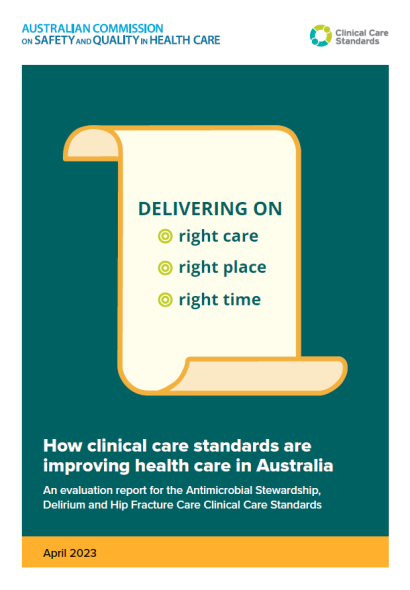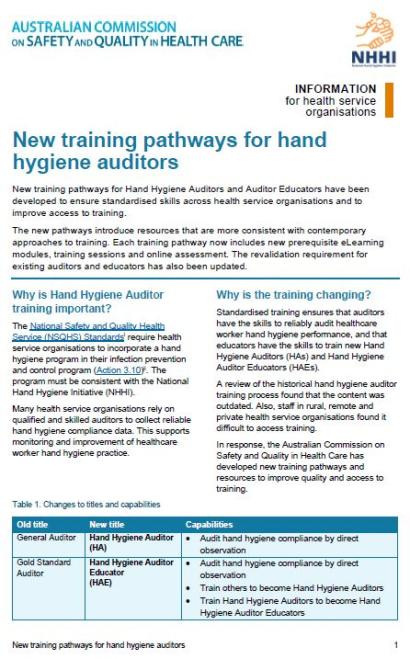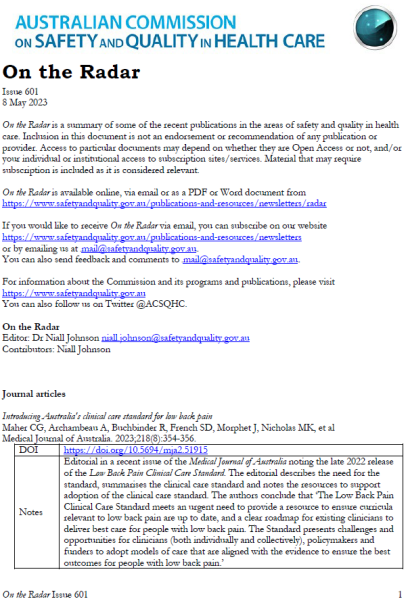Summary report for an evaluation of the Antimicrobial Stewardship, Hip Fracture Care and Delirium Clinical Care Standards.
New training pathways have been developed for Hand Hygiene Auditors and Hand Hygiene Auditor Educators to ensure standardised skills across health service organisations and to improve access to training.
From 31 May 2023, all health service organisations conducting clinical trials will be assessed against the National Clinical Trials Governance Framework (Governance Framework).
On the Radar Issue 601 is now available.
Key spokespeople
Chief Medical Officer and Clinical Directors
This OECD-led survey measures Patient-Reported Outcomes Measures and Patient-Reported Experiences Measures for people living with chronic conditions in primary care.
This issue includes items on the Low Back Pain Clinical Care Standard, medical line entanglement, tuberculosis, COIVD-19 and more.
Also covered are the latest issues of the Journal of Patient Safety and Risk Management, Journal for Healthcare Quality, Health Expectations, and Health Affairs along with early online papers from BMJ Quality & Safety and International Journal for Quality in Health Care and the latest from the UK’s NIHR and NHS and the USA’s AHRQ



